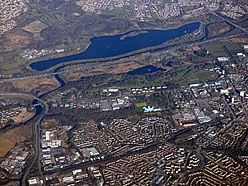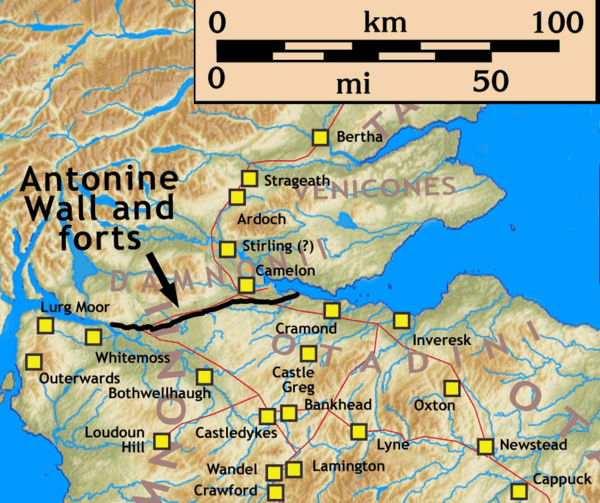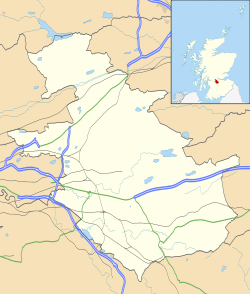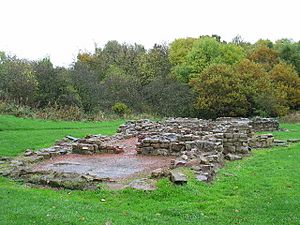Bothwellhaugh Roman Fort facts for kids
Quick facts for kids Bothwellhaugh Roman Fort |
|
|---|---|

The fort was located on land which is now to the north of Strathclyde Loch
|
|
| Location | |
| Coordinates | 55°47′48″N 4°01′35″W / 55.796699°N 4.026359°W |
| Place name | Strathclyde Country Park |
| County | North Lanarkshire |
| Country | Scotland |
| Reference | |
| UK-OSNG reference | NS731575 |
Bothwellhaugh Roman Fort is an old Roman army base in Scotland. You can find it today inside Strathclyde Country Park in North Lanarkshire. It is east of where the South Calder Water flows into Strathclyde Loch. This fort is a scheduled monument, which means it's a special place protected by the government because it's historically important.
Contents
Where is Bothwellhaugh Roman Fort?
Long ago, before Bothwellhaugh village was flooded to create the loch, this fort stood near where a Roman road crossed the South Calder Water. This river then joined the bigger River Clyde. The Roman road was called Watling Street. Old maps show it even before the river changed its path and before people found the fort again.
Today, the fort is west of Motherwell, which is the closest large town. It is also north of Hamilton and south of Bellshill.
How Was the Fort Discovered?

People first wrote about a Roman building here a long time ago. This was mentioned in a book called the Old Statistical Account. The fort itself was found again by J. M. Davidson in 1925.
The fort was shaped like a rectangle with slightly uneven sides. It was big enough to hold both Roman foot soldiers and cavalry (soldiers on horseback). Experts believe that roads connected this fort to other Roman sites. These include forts along the Antonine Wall to the north and a fort called Castledykes to the south. How these roads were exactly connected is still being studied by archaeologists.
The Roman Bath House
A Roman bath house was later found near the fort. It was located between the fort and an old bridge called 'Roman Bridge'. This bath house was discovered in November 1973 under a pond. To protect it, the bath house was moved to higher ground in 1980. Now, you can visit it!
Archaeologists, led by Lawrence Keppie, fully dug out the bath house in 1975-1976. It had several rooms for different parts of the bathing process:
- A Vestibule: This was an entrance area.
- A Frigidarium: A cold room with a cold pool for swimming.
- Two Tepidariums: These were warm rooms.
- A Caldarium: A hot room with a hot bath nearby.
- A Praefurnium: This was the furnace room that heated the baths.
About 20 soldiers could use the bath house at one time.
What Was Found at the Fort?
Hundreds of items were found during the digs at Bothwellhaugh. These items were taken to the Hunterian Museum at Glasgow University. Some of the cool things found include:
- A Roman drain cover slab.
- A special cup used for hunting.
- A tile with a paw print on it.
Pottery found at the site shows that the Romans were here during the time of the Antonine Wall. However, it's still not clear exactly how this fort was connected to the Antonine Wall. A full list of all the finds, along with many drawings, is available for experts to study.
The bath house is quite a distance from the main fort. This suggests that there might be other Roman buildings nearby that haven't been found yet.



